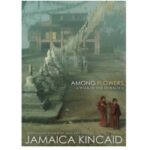Again: the toddler’s favourite word. For, as Walter Benjamin reminded us, children are much more inclined to repetition than imitation. And so, with little more than a chiastic reversal of the vowel sounds, what would happen if we turned the Arcades Project into the Playparks Project?

Walter Benjamin never visited Scotland. But he was aware of its existence. In his Small History of Photography he applauded the work of David Octavius Hill, who famously depicted the 1843 Disruption of the Church of Scotland. And for one of his radio talks he chose the subject of the Tay Bridge disaster of 1879. Of Glasgow, however, I have found nothing.
Yet my gamble is that if it is possible to shed important light on the 19th Century through a thick description of the shopping arcades of Paris, then why not try to capture the secret of the 21st by dwelling in Glasgow’s playparks?
Part of the attraction of the arcade for Benjamin was its academic marginality: it suited well his belief in the redemptive power of the overlooked and unfashionable. Now that Benjamin is well-known, and has posthumously acquired more than just the academic post that so eluded him during his lifetime, the lowly objects of his study are lowly no more. I’m an arcade, get me out of here, I can almost hear it scream.
So it’s time to upgrade, and set our sights on a phenomenon still neglected by the trendy cultural theorists. Indeed the whole realm of childhood and childcare seems largely to pass them by, happily consigned to psychology and social policy. If it is now permitted for Benjamin’s flâneur to be a woman, we are still waiting for studies of the wandering parent – the prâmeur if you will – who probably botanises the asphalt more than anyone.
While Benjamin may not have been much of a ‘hands on’ dad – and he probably saw even less of his son after his divorce in 1930 when Stefan was twelve – he actually took a keen interest in children. He collected (and wrote essays on) toys and children’s books. He wrote two memoirs of his own early years in Berlin, collected his son’s opinions et pensées in a journal, and his work in general is sprinkled with remarks on the distinctive sensibility of the very young. Gershom Scholem wrote:
It is one of Benjamin’s most important characteristics that throughout his life he was attracted with almost magical force by the child’s world and ways. This world was one of the persistent and recurring themes of his reflections, and, indeed, his writings on this subject are among his most perfect pieces.1
His radio talks for children have been the subject of a book by Jeffrey Mehlman.2Howard Caygill has suggested that it was Benjamin’s reflections on the child’s experience of colour that prompted him to question Kant’s philosophy and elaborate his own, alternative, speculative critique of experience.3 And, according to Susan Buck-Morss, ‘what Benjamin found in the child’s consciousness, badgered out of existence by bourgeois education and so crucial to redeem (albeit in new form), was precisely the unsevered connection between perception and action that distinguished revolutionary consciousness in adults.’4
That’s my excuse anyway for stepping out and daring to offer some dispatches from the ludic archipelago in Scotland’s largest city.
Notes
- Gershom Scholem, ‘Walter Benjamin’ in On Jews and Judaism in Crisis: Selected Essays, ed. Werner J Dannhauser (New York: Schocken, 1976), p175.
- Jeffrey Mehlman, Walter Benjamin for Children: An Essay on His Radio Years(Chicago and London: University of Chicago Press, 1993).
- Howard Caygill, Walter Benjamin: The Colour of Experience (London and New York: Routledge, 1998), pp83-85.
- Susan Buck-Morss, The Dialectics of Seeing: Walter Benjamin and the Arcades Project (Cambridge, Mass.: MIT Press, 1989), p263.
